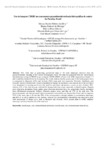Por favor, use este identificador para citar o enlazar este ítem:
http://www.alice.cnptia.embrapa.br/alice/handle/doc/902192Registro completo de metadatos
| Campo DC | Valor | Lengua/Idioma |
|---|---|---|
| dc.contributor.author | TRAJANO, S. R. R. da S. | pt_BR |
| dc.contributor.author | OLIVEIRA, B. P. de | pt_BR |
| dc.contributor.author | CHAVES, I. de B. | pt_BR |
| dc.contributor.author | LIMA, E. R. V. de | pt_BR |
| dc.contributor.author | ALVES, J. J. A. | pt_BR |
| dc.date.accessioned | 2011-10-04T11:11:11Z | pt_BR |
| dc.date.accessioned | 2011-10-04T11:11:11Z | pt_BR |
| dc.date.available | 2011-10-04T11:11:11Z | pt_BR |
| dc.date.available | 2011-10-04T11:11:11Z | pt_BR |
| dc.date.created | 2011-10-04 | pt_BR |
| dc.date.issued | 2011 | pt_BR |
| dc.identifier.citation | In: SIMPÓSIO BRASILEIRO DE SENSORIAMENTO REMOTO, 15., 2011, Curitiba. Anais... São José dos Campos: INPE, 2011. | pt_BR |
| dc.identifier.uri | http://www.alice.cnptia.embrapa.br/alice/handle/doc/902192 | pt_BR |
| dc.description | This work aims at generating georeferred maps of the main landscape elements from the geoenvironmental mapping of the Camará hydrographic basin. The map was generated from the interpretation and digital processing of CBERS images using the SPRING/INPE software with RGB composition of bands 2, 3 and 4, and data obtained from field sampling. The results indicate that the greatest part of the hydrographic basin is composed by Regosols (45%) and Acrisols (36%) associated with Leptosols, Fluvisols, Cambisols, and Luvisols. Capoeira brushwood ? which is mistaken for pasture by automatic classification due to the fact that it is an abandoned, recovering area historically used for agriculture and pasture ? covers an area of almost 38%, whereas 13% of the total area are explored for banana and citrus crops, especially in humid regions. Pangola grass (Digitaria decumbens Stent), guinea grass (Panicum maximum Jacq. var. gongyloides Doell), and napier grass (Pennisetum purpureum Schum.) dominate pasture areas, and take up 27% of the total area. The geoenvironmental unit that presented high environmental vulnerability was Encosta São Tomé, which comprises 3.5% of the basin, due to the fact that 90% of this area presents a strongly undulate to mountainous landscape, and 80% of its soil is shallow or very shallow, whereas low environmental vulnerability was detected in areas with associations of deeper soils, such as Regosols and Acrisols, which present plain to mildly undulate landscape, which occurred in 5% of the total area. | pt_BR |
| dc.language.iso | por | pt_BR |
| dc.rights | openAccess | pt_BR |
| dc.subject | Classificação | pt_BR |
| dc.subject | Vulnerabilidade ambiental | pt_BR |
| dc.title | Uso de imagem CBERS no zoneamento geoambiental em bacia hidrográfica do estado da Paraíba, Brasil. | pt_BR |
| dc.type | Artigo em anais e proceedings | pt_BR |
| dc.date.updated | 2019-05-03T11:11:11Z | pt_BR |
| dc.subject.thesagro | Solo | pt_BR |
| dc.format.extent2 | p. 2732-2739. | pt_BR |
| riaa.ainfo.id | 902192 | pt_BR |
| riaa.ainfo.lastupdate | 2019-05-03 -03:00:00 | pt_BR |
| dc.contributor.institution | SAMARA RACHEL R DA SILVA TRAJANO, CNPM; BIANCA PEDRONI DE OLIVEIRA, CNPM; IÊDE DE BRIYO CHAVES, UFPB; EDUARDO RODRIGUES VIANA DE LIMA, UFPB; JOSÉ JAKSON AMÂNCIO ALVES, UEPB. | pt_BR |
| Aparece en las colecciones: | Artigo em anais de congresso (CNPM)  | |
Ficheros en este ítem:
| Fichero | Descripción | Tamaño | Formato | |
|---|---|---|---|---|
| SamaraSBSR.pdf | 310,76 kB | Adobe PDF |  Visualizar/Abrir |









